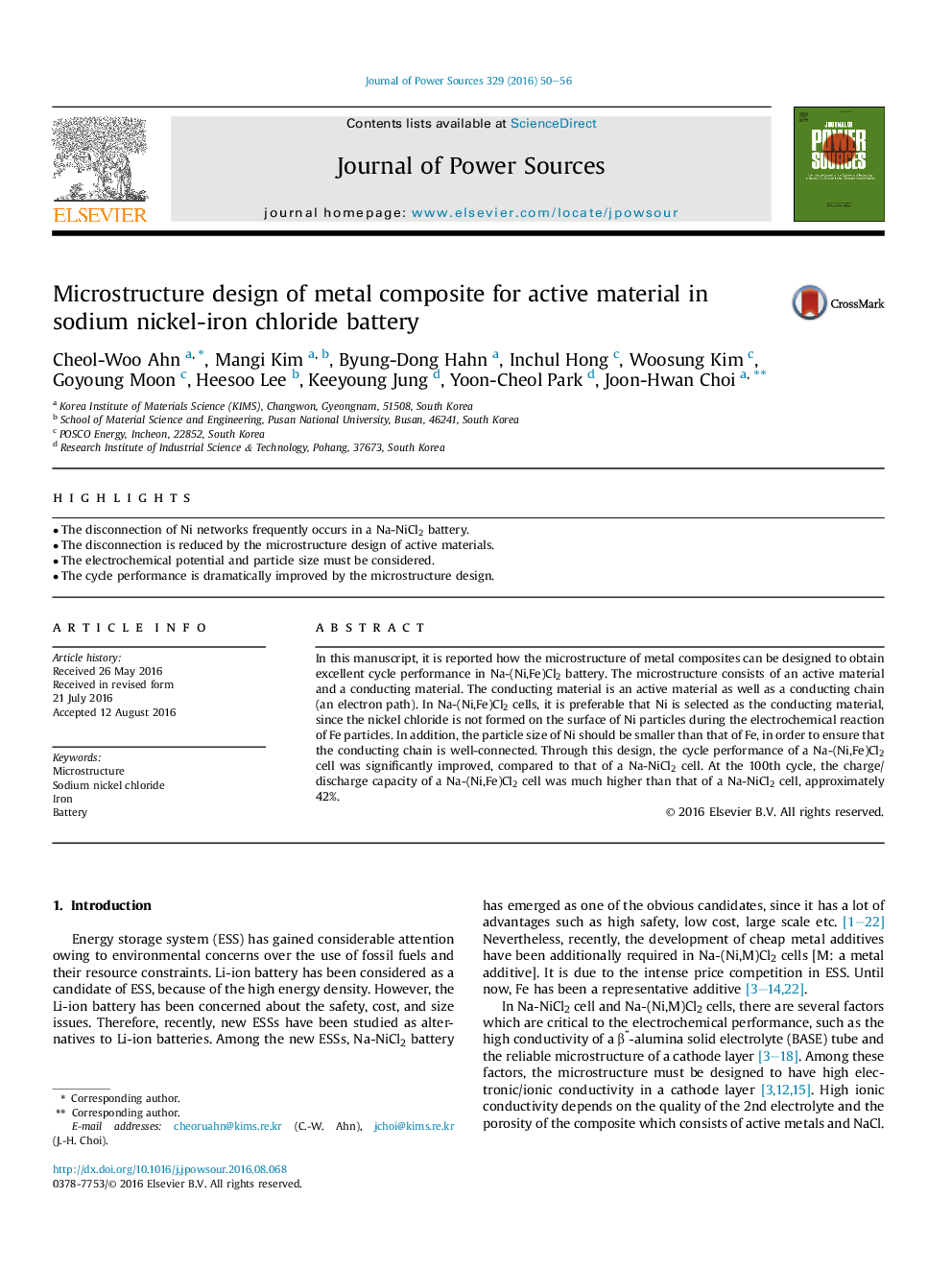| Article ID | Journal | Published Year | Pages | File Type |
|---|---|---|---|---|
| 1283395 | Journal of Power Sources | 2016 | 7 Pages |
•The disconnection of Ni networks frequently occurs in a Na-NiCl2 battery.•The disconnection is reduced by the microstructure design of active materials.•The electrochemical potential and particle size must be considered.•The cycle performance is dramatically improved by the microstructure design.
In this manuscript, it is reported how the microstructure of metal composites can be designed to obtain excellent cycle performance in Na-(Ni,Fe)Cl2 battery. The microstructure consists of an active material and a conducting material. The conducting material is an active material as well as a conducting chain (an electron path). In Na-(Ni,Fe)Cl2 cells, it is preferable that Ni is selected as the conducting material, since the nickel chloride is not formed on the surface of Ni particles during the electrochemical reaction of Fe particles. In addition, the particle size of Ni should be smaller than that of Fe, in order to ensure that the conducting chain is well-connected. Through this design, the cycle performance of a Na-(Ni,Fe)Cl2 cell was significantly improved, compared to that of a Na-NiCl2 cell. At the 100th cycle, the charge/discharge capacity of a Na-(Ni,Fe)Cl2 cell was much higher than that of a Na-NiCl2 cell, approximately 42%.
